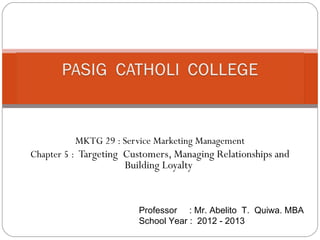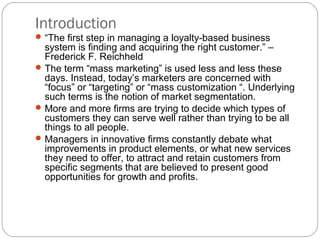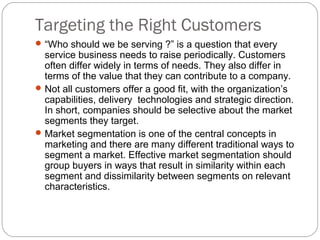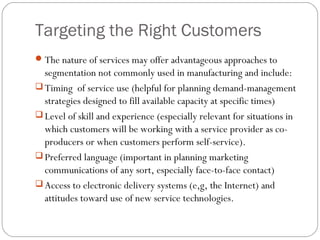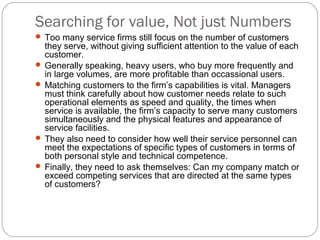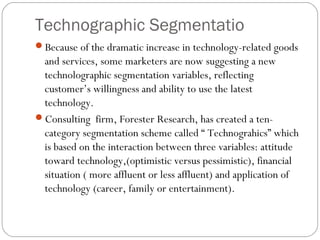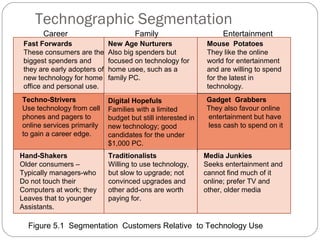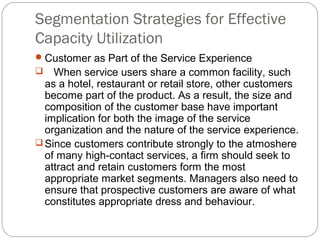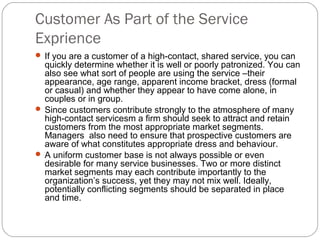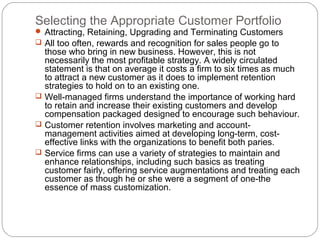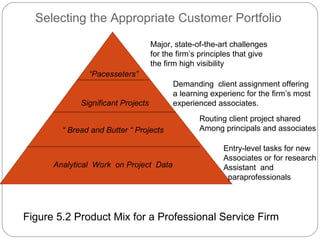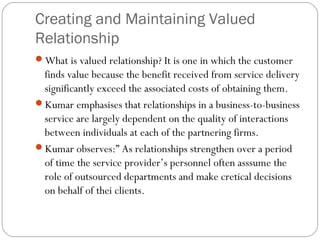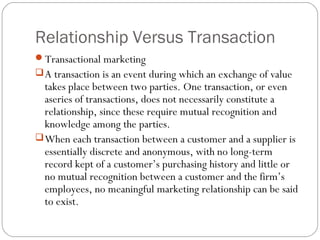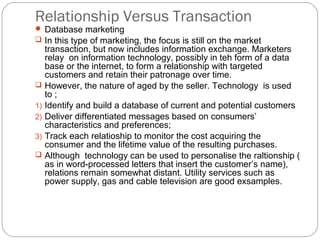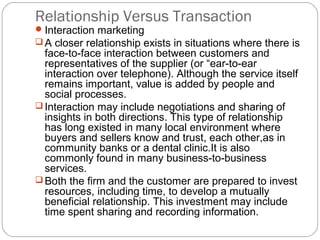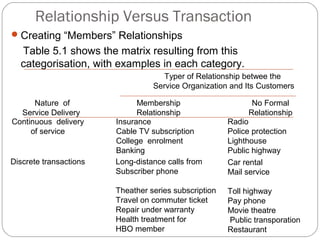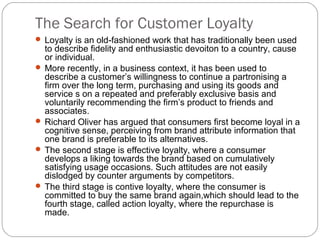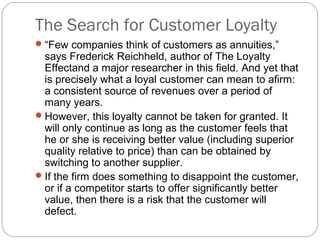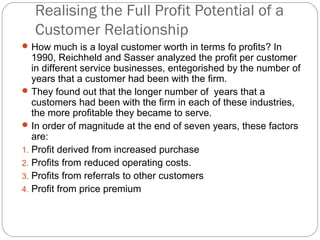This document summarizes key points from Chapter 5 of a marketing textbook on targeting customers, managing relationships, and building loyalty. It discusses segmentation strategies like technographic segmentation based on customer attitudes and use of technology. It emphasizes that firms should target customers that provide the most value, not just numbers. For services with shared facilities, the document notes that managing the customer mix is important to ensure different segments do not conflict and negatively impact the service experience. While firms would like to restrict service to targeted customers, outright refusal may be illegal, so indirect methods are recommended to discourage non-targeted customers.
